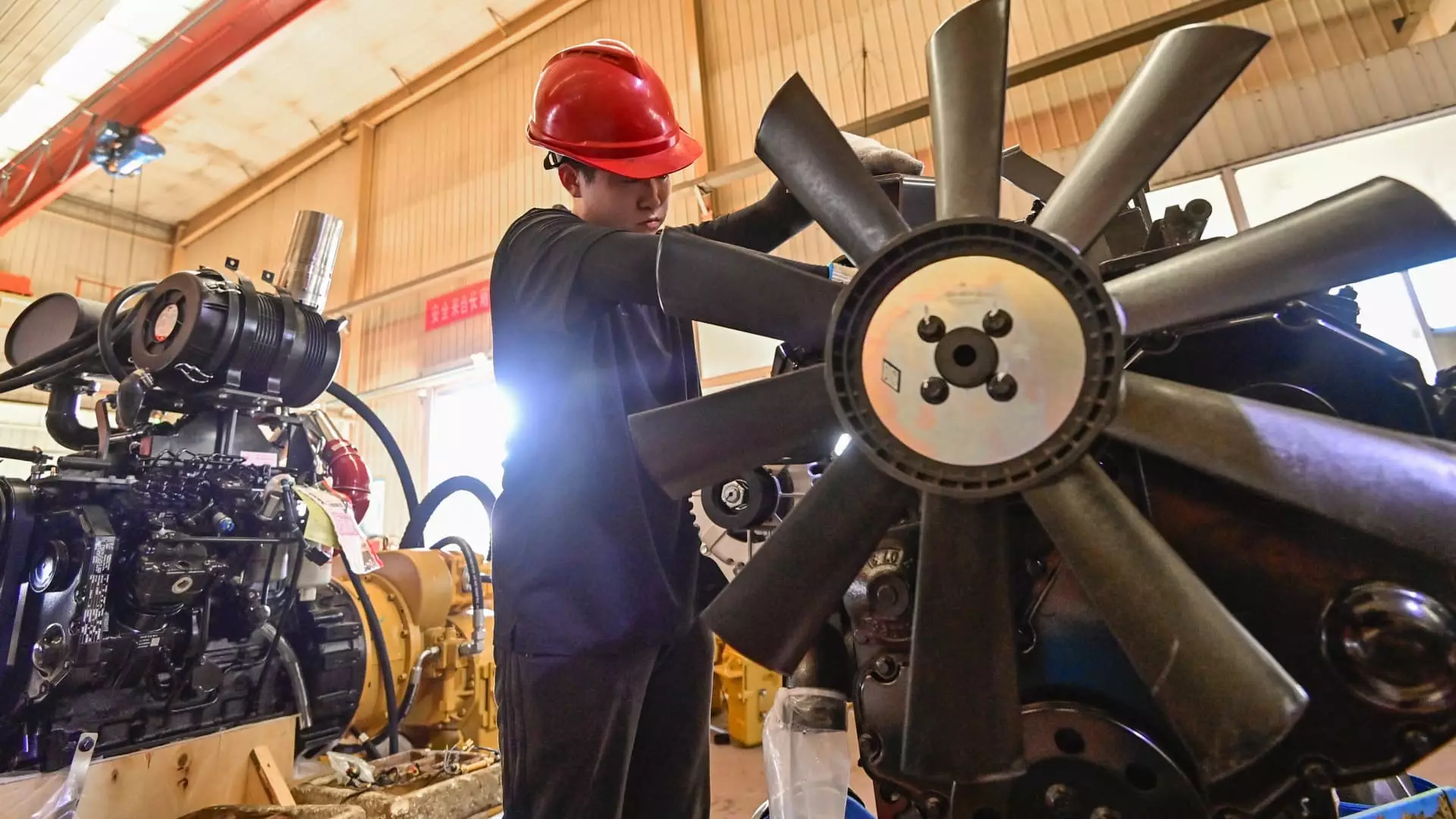The manufacturing sector is often considered a bellwether for economic health, particularly in a nation as pivotal to global trade as China. Recent developments suggest a potential turning point, as recent data indicates a modest expansion in factory activity among smaller manufacturers for October. This uptick follows a series of fluctuations and underlines the complexities facing the Chinese economy.
The Caixin/S&P Global manufacturing purchasing managers’ index (PMI) reported a figure of 50.3 for October, surpassing the anticipated 49.7 from a Reuters poll. This is a notable increase from September’s Reading of 49.3, marking a shift from contraction to slight expansion. For context, a PMI above 50 suggests growth in manufacturing activity, while a figure below that indicates a contraction. Such indicators, particularly the Caixin PMI, are crucial as they provide insights into different segments of the manufacturing sector, emphasizing smaller, more agile firms often involved in exporting.
The divergence between the Caixin PMI and the official readings—largely representing state-owned enterprises—highlights the varying conditions across different types of manufacturers. In October, the data reflects a recovery in both supply and demand, which is integral for sustained economic growth.
According to Wang Zhe, a senior economist at Caixin Insight Group, the expansion was driven by improving market demand and a steady growth in production. There is a clear correlation between incoming new orders and underlying demand, which has reportedly been bolstered by recent business development initiatives. This is a positive sign, indicating that businesses are responding adaptively to the economic climate.
However, despite the encouraging rise in new orders, export performance remains a concern. The latest survey indicates a decline in export orders, though the pace of this decline has lessened. Employment figures also tell a less favorable story, showing a continued reduction in workforce numbers, suggesting that manufacturers remain cautious about hiring amidst uncertain economic conditions.
The recent PMI data is perceived as a positive omen, particularly in light of the Chinese government’s recent stimulus measures initiated in September. Significant policy changes, such as reducing the reserve requirement ratio (RRR) by 50 basis points and lowering the benchmark reverse repurchase rate, are expected to instigate liquidity in the market and encourage lending.
Andy Maynard of China Renaissance stated that the current uptick is just a “baby step,” emphasizing the need for sustained positive indicators moving forward. The reduction in key interest rates aims to ease financial burden on businesses, but it remains to be seen whether these measures will bring about a substantial and prolonged recovery.
The Challenges Ahead
While there are glimmers of hope, it’s imperative to navigate these developments with caution. Analysts like Gary Ng from Natixis underline the importance of sustaining the momentum generated by recent government actions. China’s economy still faces significant hurdles: sluggish domestic consumption, a challenging property market, and intense internal competition continue to pose risks.
Furthermore, external factors affect China’s export landscape, particularly geopolitical tensions and the rise of protectionist sentiments worldwide. The potential impact of the upcoming U.S. elections may introduce additional uncertainties that could influence trade relations and economic diplomacy.
While the October PMI figures suggest a rebound in China’s manufacturing sector, the road to recovery is fraught with challenges. Encouraging signs of growth in factory activity must be tempered with a realistic assessment of the underlying economic conditions. Continuous monitoring of both domestic policy responses and global economic trends will be essential to gauge the long-term viability of this rebound. The upcoming parliamentary meetings and subsequent announcements regarding fiscal stimulus will be critical in shaping the forthcoming outlook for China’s economy.


Leave a Reply